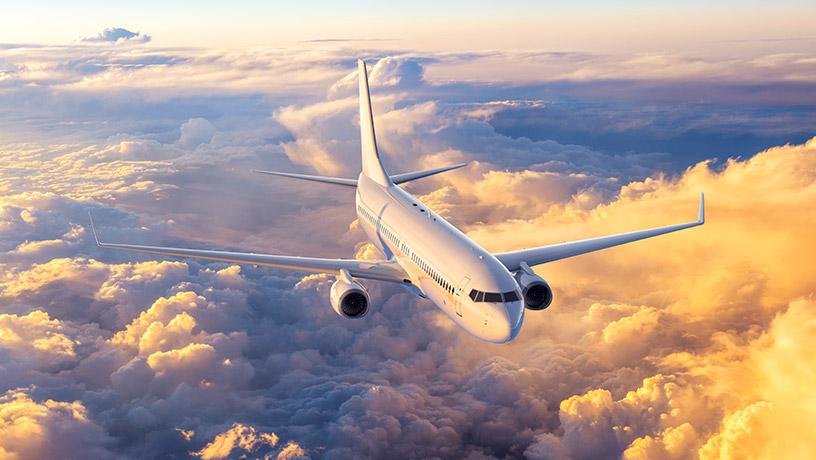Can 5G Really Bring Down an Airplane?
How the 5G rollout grounded hundreds of flights—and how to fix it

Earlier this week, hundreds more flights were abruptly canceled across the US. This time, however, the culprit wasn’t COVID-19 or winter weather; it was your new smartphone. As US carriers rolled out 5G networks across the country, the airline industry raised red flags about how the technology could interfere with sensitive navigation equipment.
Professor Henning Schulzrinne, an expert in wireless technology who previously served as chief technology officer for the Federal Communications Commission (FCC), explains what exactly 5G is, why airlines are worried about it, and how industry and government can fix the situation.
Currently, almost 42 million 5G mobile phones are in use in the US. It’s expected that over 100 million will be in the hands of Americans by the end of 2022. What exactly is 5G technology?
5G technology is the emerging fifth generation of cellular technology, now found on many smartphones and offered by all the major carriers. The wireless communications industry labels technical advances and changes by generation, from first-generation systems (1G) developed in the 1980s to the current fifth generation. Compared to those previous generations, 5G can offer faster speeds to individual users and higher capacity overall for the wireless service providers. For example, this may improve the video quality while watching movies on a cell phone. Longer-term, network delays may decrease, making playing interactive games on mobile devices more enjoyable. It also has the capability to support specialized industrial applications; self-driving cars need high-precision maps and real-time data from the cloud, for instance, which requires very high bandwidth. 5G is the only realistic option to add more capacity to wireless networks.
Hundreds of flights were canceled on January 19 due to concerns over how 5G was being deployed near airports. How can 5G impact airplane frequencies?
The FAA is concerned that these new cell towers will lead to misleading altitude readings and thus affect aviation safety. What we saw last week, with the sudden cancellation of flights, was the result of an avoidable lack of coordination between the FAA and the FCC.
This is a classical collision of an old, but important, technology with a new one. The FCC, which allocates radio frequencies to different uses, needs to provide a new range of radio frequencies that 5G systems can use. To do that, they auctioned off a part of the spectrum that had been only lightly used for some older satellite technology. All the major cellular providers bought this spectrum in early 2021. This frequency band happens to be ideal for 5G service—it offers high capacity, but still can cover a reasonably large geographic area from one cell tower.
But the FAA noticed that this band is adjacent to the frequency band used by altimeters, navigation instruments using radar carried by commercial aircraft. These altimeters provide very precise altitude information, telling the pilot how many feet they are above ground.
They are primarily used for landing, particularly when visibility is poor. Clearly, a bad height-above-ground reading could be quite dangerous.
Unfortunately, altimeters were designed when the frequencies below their radar frequency were pretty quiet. The 5G cell towers use much higher power, so the altimeters already installed may not be able to filter out these frequencies. The key thing is, nobody seems to know exactly whether this affects all altimeters most of the time or whether it is limited to a small number of altimeter models—and maybe even only under unusual circumstances.
Currently, as a temporary fix, the carriers have agreed to turn off the relevant cell towers within about two miles of major airports.
What should the FCC and FAA do now to resolve this issue?
We have very little trustworthy, neutral data on whether these cell sites would affect altimeter readings, even though these frequency auctions were well known to everyone since at least 2018. In general, the problem of devices being disturbed by radio signals outside their operating frequency range is not new. It occurs whenever one system relies on very faint signals, and a new “noisy” neighbor arrives—similar to having a subway, airport, or music club built next to a music recording studio. More than a decade ago, a very similar issue arose for bands next to the GPS frequencies—and the problem still hasn’t been resolved completely.
The FCC should get the authority to require devices to be sufficiently robust against neighboring noise with defined “loudness,” so that neighboring frequencies can live harmoniously side by side.
The FAA should have evaluated actual aircraft systems early on, back when the proposal for the auction was being discussed, rather than more or less waiting to raise safety objections when the new cell sites were about to be turned on. But the FCC lacks the research capacity to do these experiments, while the FAA lacks the radio interference experience.
As the radio spectrum gets more crowded, we need to make the radio “zoning” I described technically achievable and clearly regulated—so that this doesn’t devolve into arguments between federal agencies relying on paid consultants, with the confused public left to figure out whether it is safe to fly and carriers wondering whether they wasted their auction bids.
